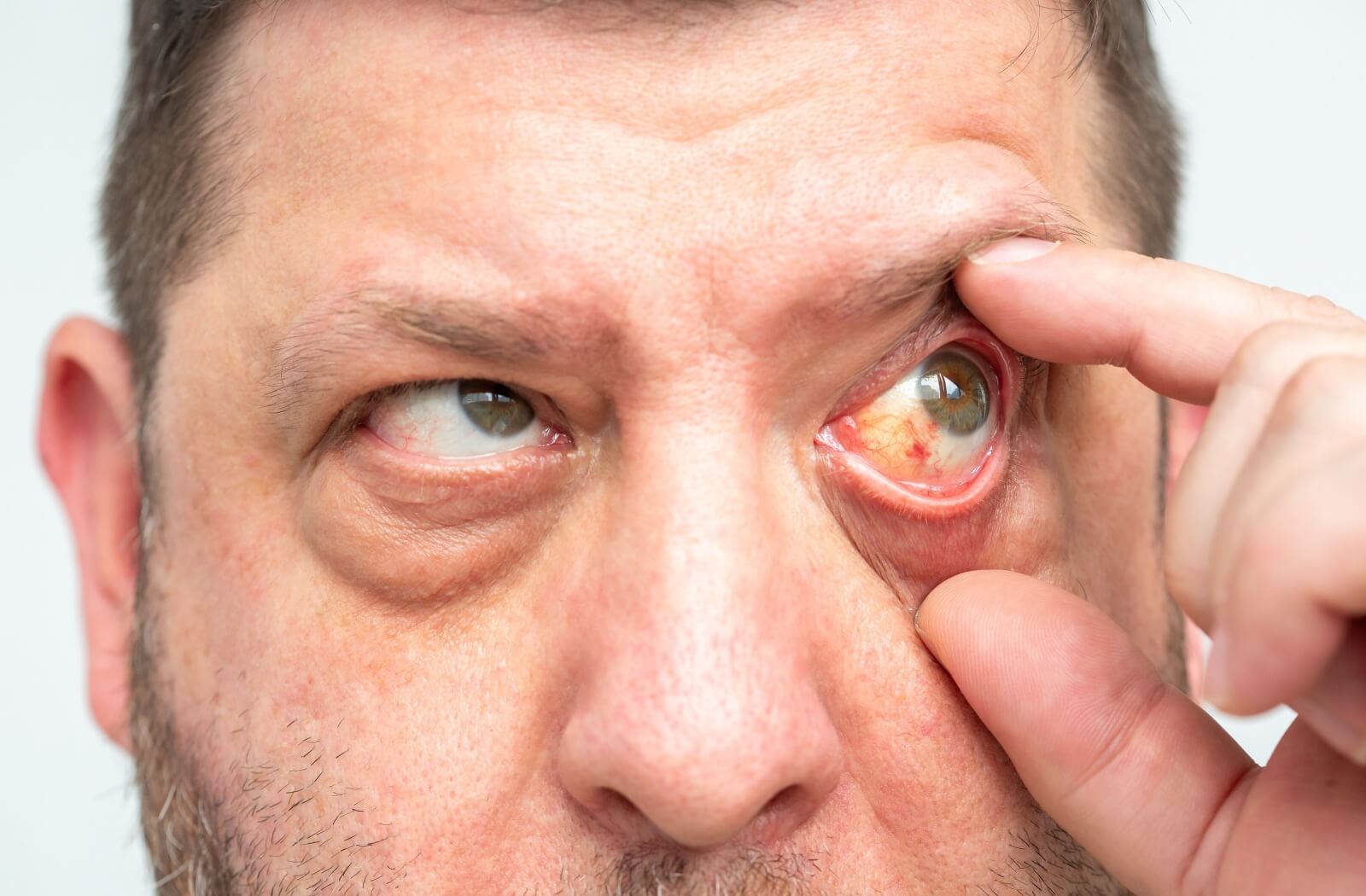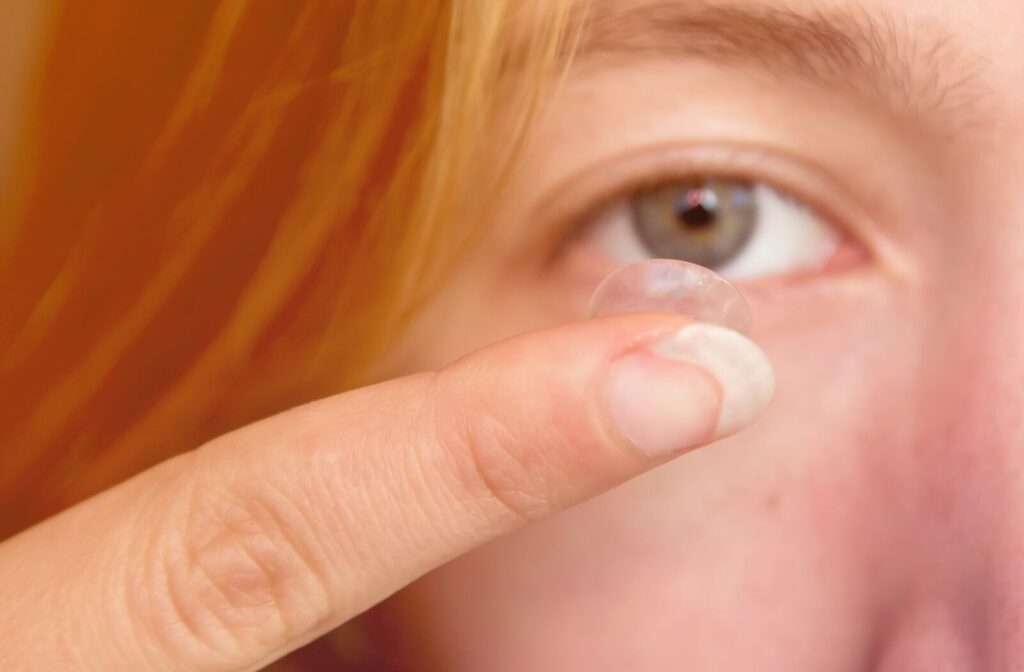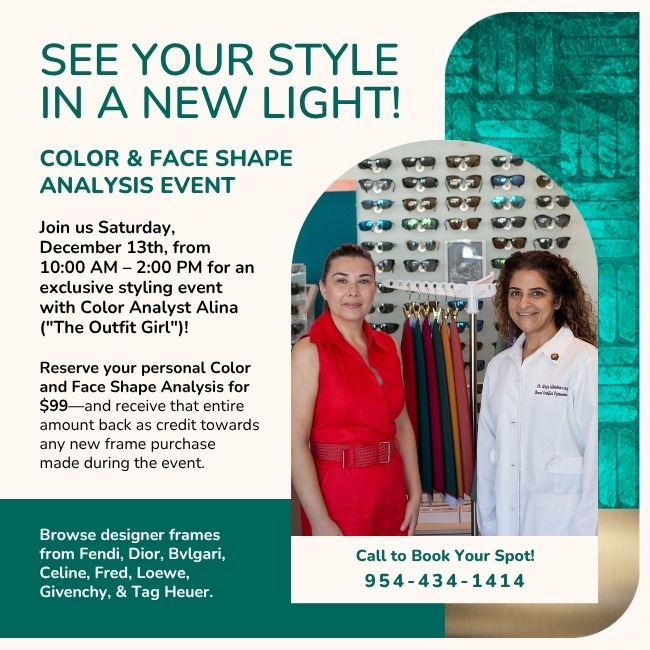If you wear contact lenses regularly, then getting pink eye can be a real inconvenience. Pink eye, or conjunctivitis, is an infection of the clear membrane that lines your eyelid and covers the white part of your eyeball. It can cause uncomfortable symptoms such as redness, itching, discharge, and even blurred vision.
With pink eye being so common and easily transmitted, it’s important to know how to properly care for your eyes while you have it. If you wear contacts, it is not recommended to continue wearing them while you have pink eye. This is because contact lenses can further irritate your eyes and make it easier for bacteria or viruses to spread, prolonging the infection.
However, there are some exceptions to this rule. If you wear daily disposable contacts, it may be okay to continue using them as long as you dispose of them properly after each use and thoroughly clean your hands before handling them. But if you wear reusable contacts, such as bi-weekly or monthly lenses, it’s best to avoid wearing them until your pink eye has completely cleared up.
Wearing Contacts with Pink Eye: The Do’s & Don’ts
To help prevent further irritation and the spread of infection, here are some do’s and don’ts for wearing contacts with pink eye:
- DO replace your contact lenses with glasses. This will allow your eyes to breathe and heal without the added irritation contact lenses cause.
- DON’T wear contacts if you have been diagnosed with bacterial or viral conjunctivitis. It’s important to follow your doctor’s advice and avoid potential complications.
- DO clean your hands thoroughly before handling your contacts, even if they are daily disposable ones.
- DON’T use contact lens solution contaminated by using it while you had pink eye. This can cause a recurrence of the infection.
- DO dispose of your daily disposable contacts properly after each use and avoid reusing contact lenses that have already been worn while you had pink eye.
- DON’T wear contacts for longer than recommended, especially if you are experiencing discomfort or redness in your eyes.
- DO consult with an eye doctor before wearing contacts again after recovering from pink eye. They can assess whether it is safe for you to resume wearing them.
Identifying Pink Eye & Taking Precautions
Pink eye, or conjunctivitis, is a common eye infection that can cause redness, itching, discharge, and discomfort in the eyes. It can be caused by bacteria, viruses, allergies, or irritants. This infection is highly contagious, particularly when brought on by bacteria or viruses, making it essential to take precautions to prevent it from spreading to others and causing further irritation to your own eyes.
Some ways to identify pink eye include:
- Consulting with an eye doctor for a proper diagnosis. An eye doctor can use specialized equipment to examine your eye and determine the cause of the infection.
- Noticing excessive tearing or discharge from the eyes. The discharge can vary in color and consistency, ranging from watery to thick and yellow or green.
- Experiencing itchiness or burning sensations in the eyes. These symptoms can cause significant discomfort and may prompt frequent rubbing of the eyes, which can exacerbate the condition.
- Observing redness or swelling in the white part of the eye or inner eyelid. The redness is due to inflammation of the conjunctiva, the thin layer of tissue covering the white part of the eye.
- Feeling sensitivity to light. This symptom, known as photophobia, can make it uncomfortable to be in bright environments and can cause squinting or eye pain.

Managing & Preventing Pink Eye
Consult an Eye Doctor
If you suspect you have pink eye, it’s important to consult with an eye doctor for a proper diagnosis. They can also provide guidance on the best course of treatment for your specific case. In most cases, pink eye will resolve itself within a week or two with proper care and precautions. However, if symptoms persist or worsen, it’s important to seek medical attention to prevent any potential complications.
Follow Your Eye Doctor’s Recommendations
If you have been diagnosed with pink eye, be sure to take precautions and follow your doctor’s recommendations for treatment. This may include using medications such as eye drops or ointments to reduce inflammation and fight infection.
You should also avoid irritants that may worsen symptoms, such as smoke, dust, and allergens. Taking steps to prevent the spread of infection is crucial, which can involve frequent hand washing, avoiding touching your eyes, and not sharing personal items like towels, pillows, or makeup.
Maintain a Clean Environment
It’s essential to maintain a clean environment to minimize the risk of spreading the infection. Regularly disinfecting commonly touched surfaces, such as doorknobs and light switches, can also help prevent transmission. In some cases, individuals may need to stay home from work, school, or other activities to limit contact with others until the infection resolves.
Prioritizing Your Eye Health at EyeQ Optical
Wearing contact lenses when you have pink eye is generally not recommended. Contact lenses can exacerbate the symptoms of pink eye and may prolong the healing process. It is crucial to follow your eye doctor’s advice and switch to glasses until the infection has completely resolved. Proper hygiene practices, including regular hand washing and avoiding touching your eyes, are essential in managing and preventing the spread of pink eye.
At EyeQ Optical, we prioritize the health and safety of our patients. If you experience any symptoms of pink eye, schedule an appointment with our optometrist for a thorough examination and proper treatment.




